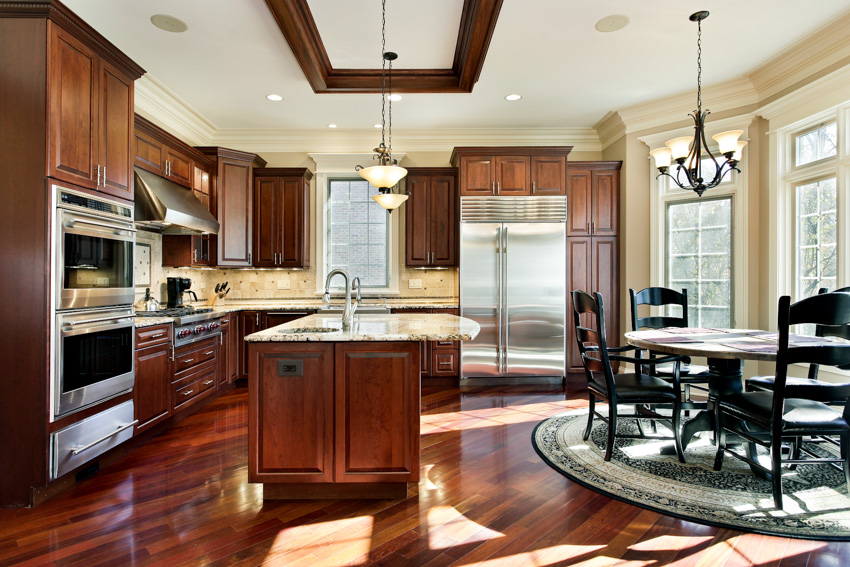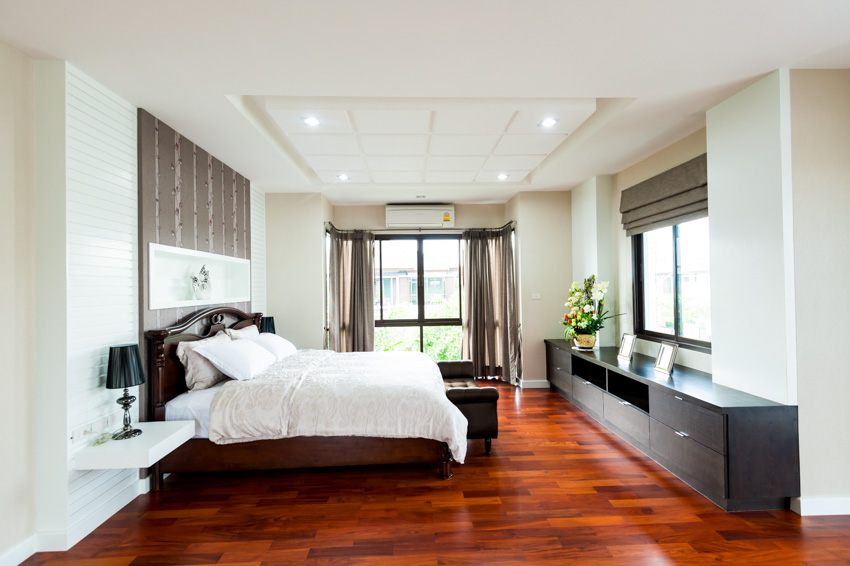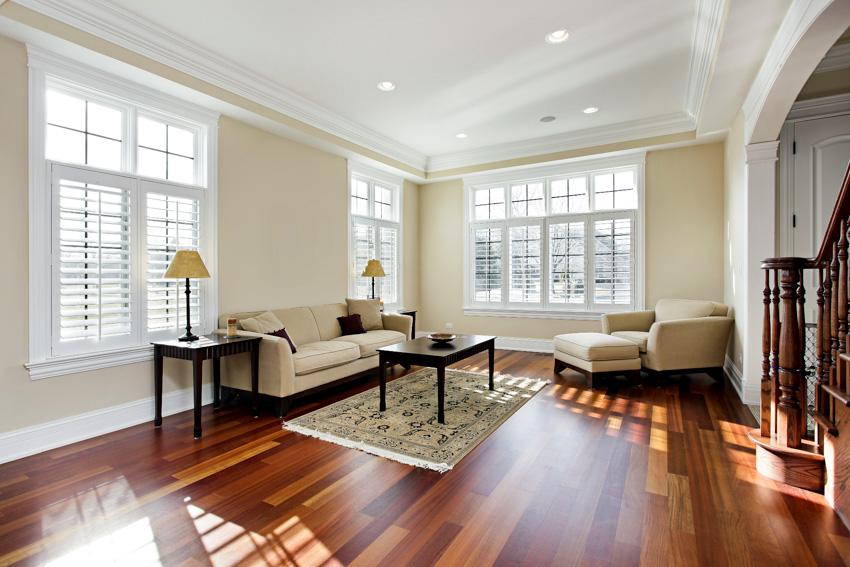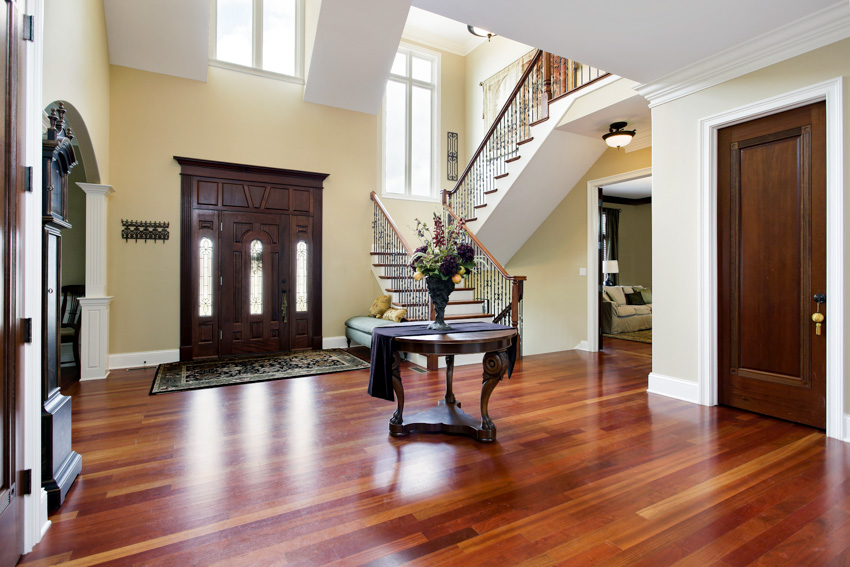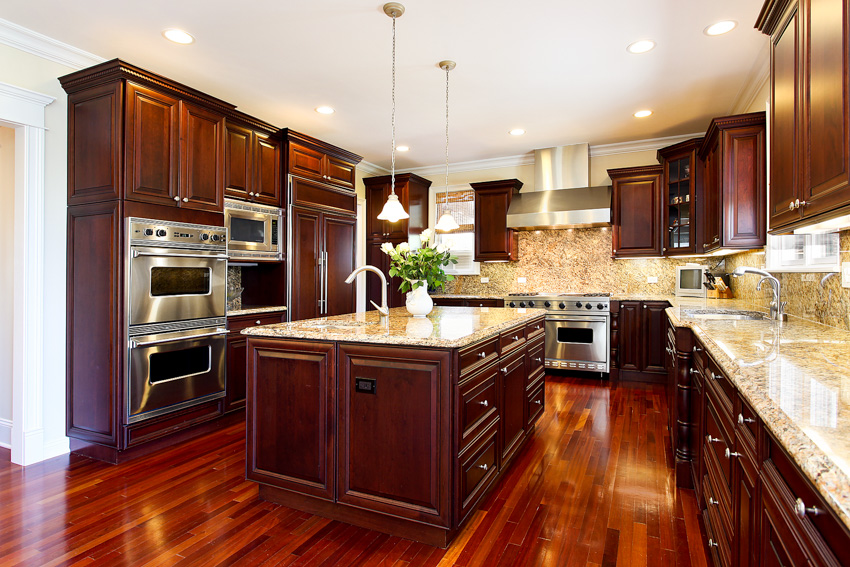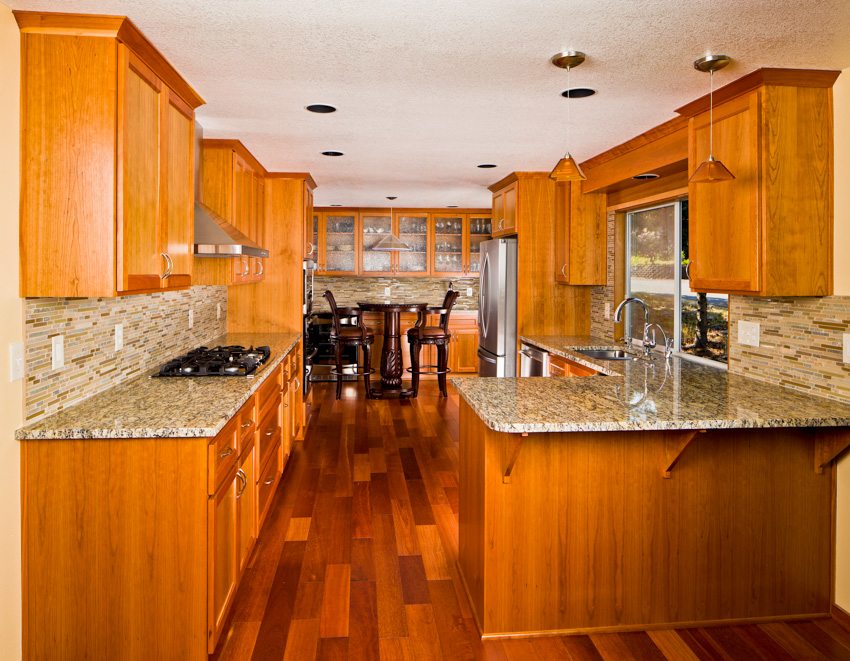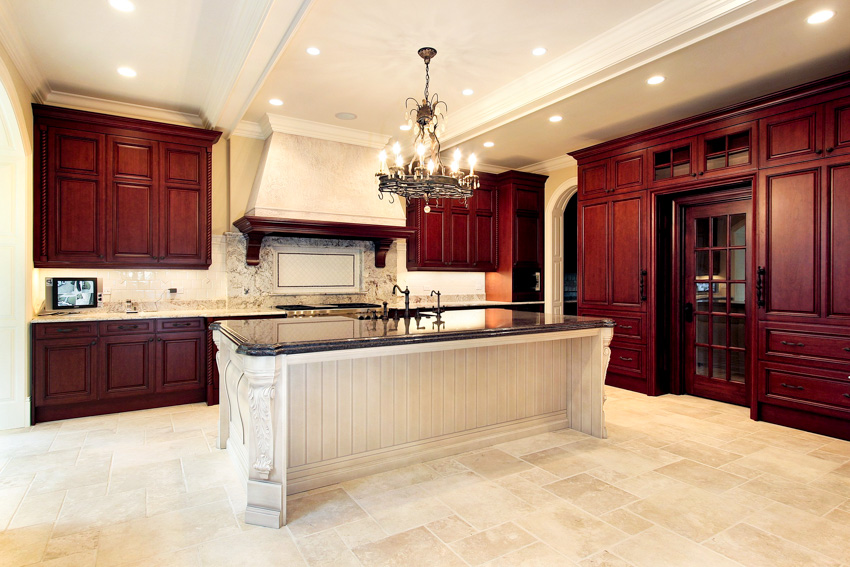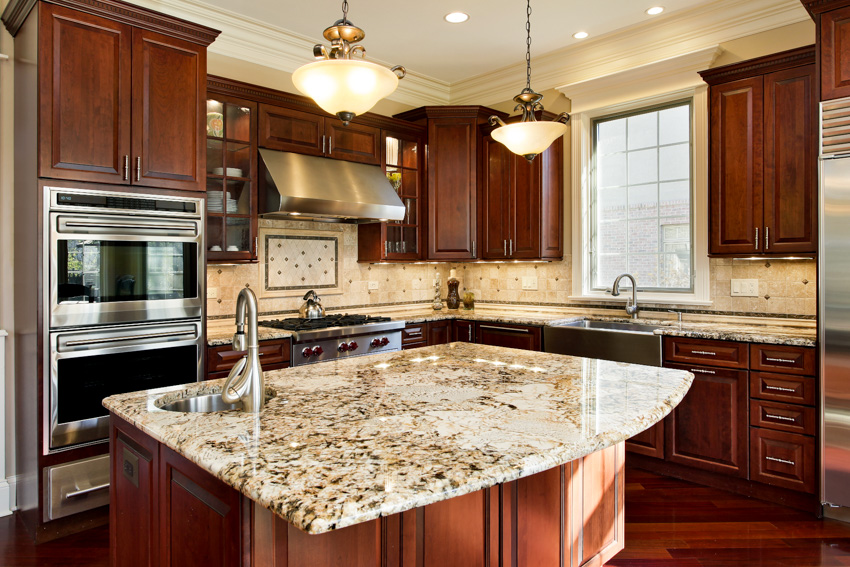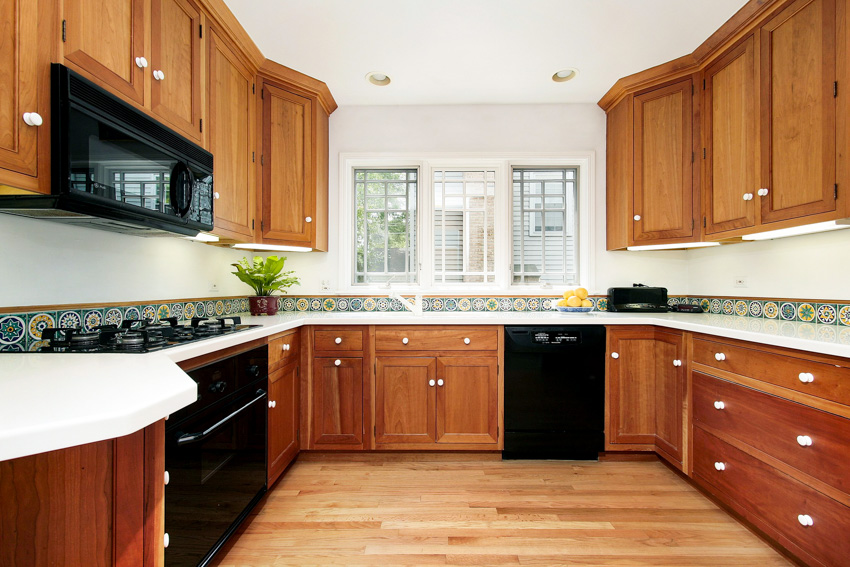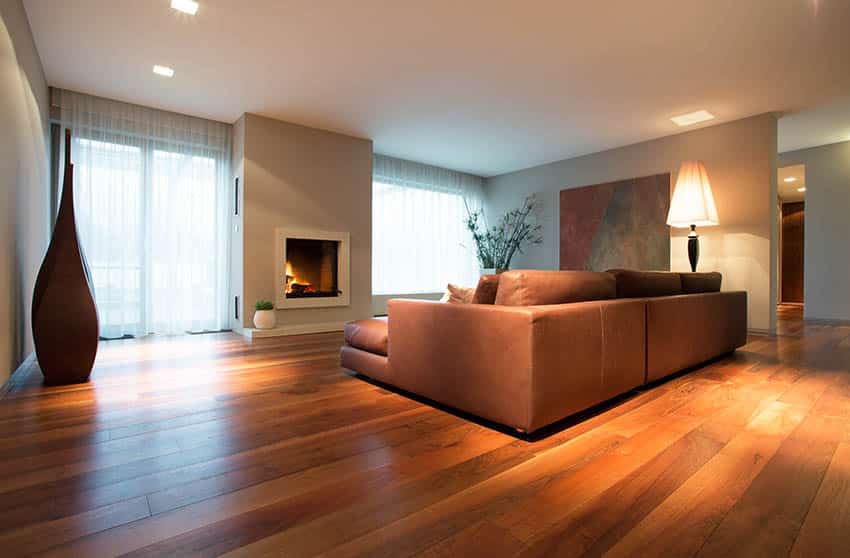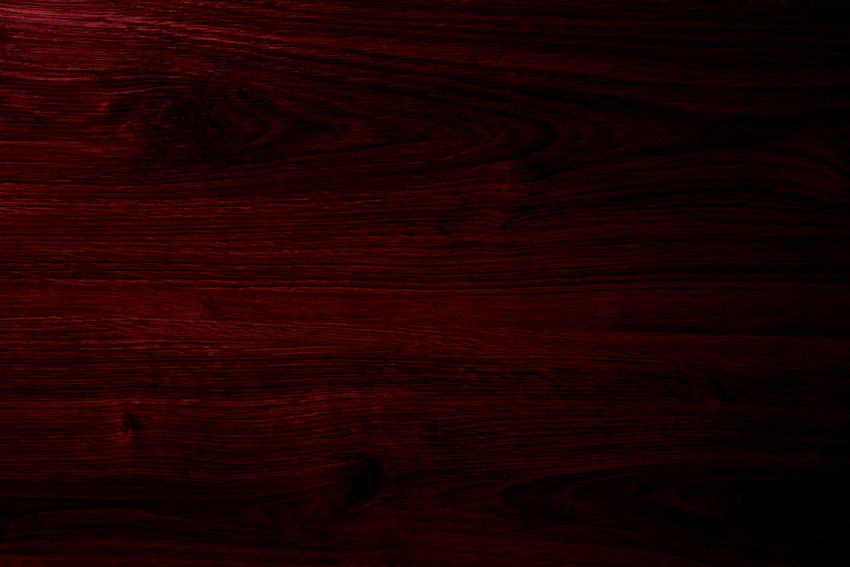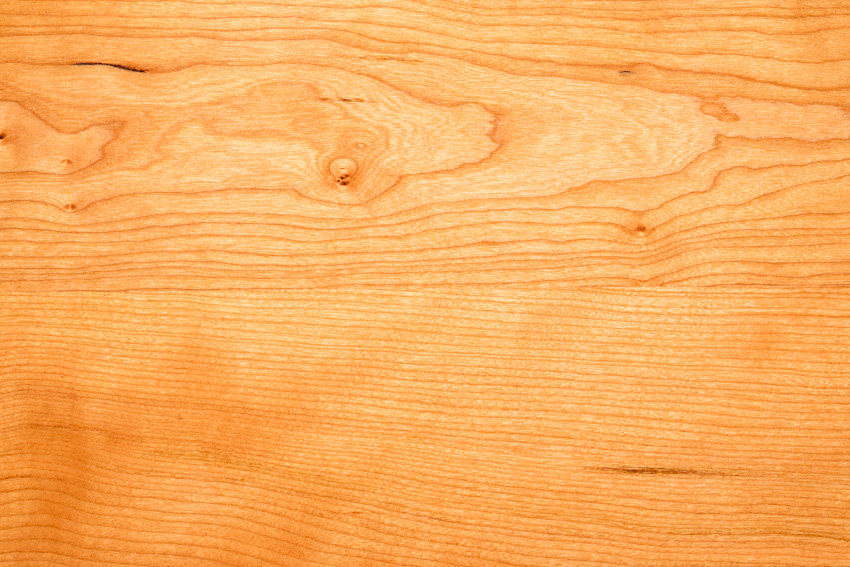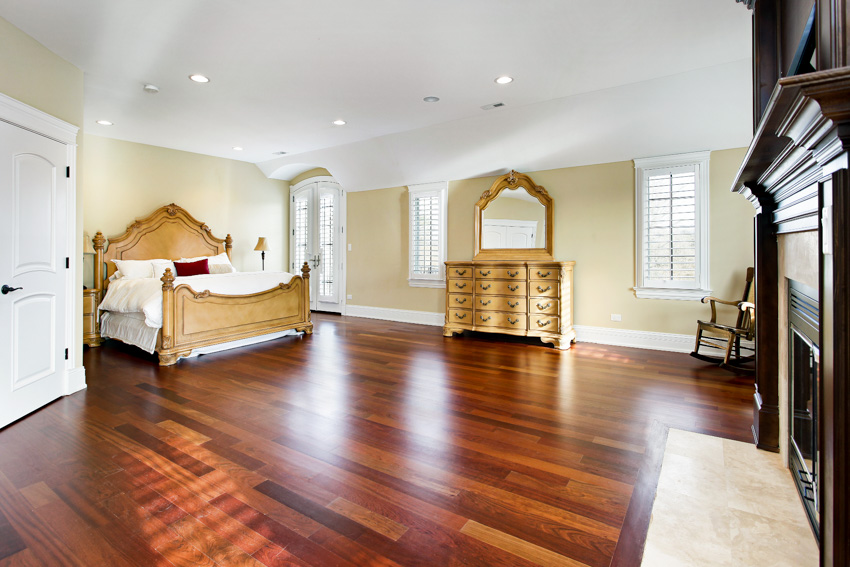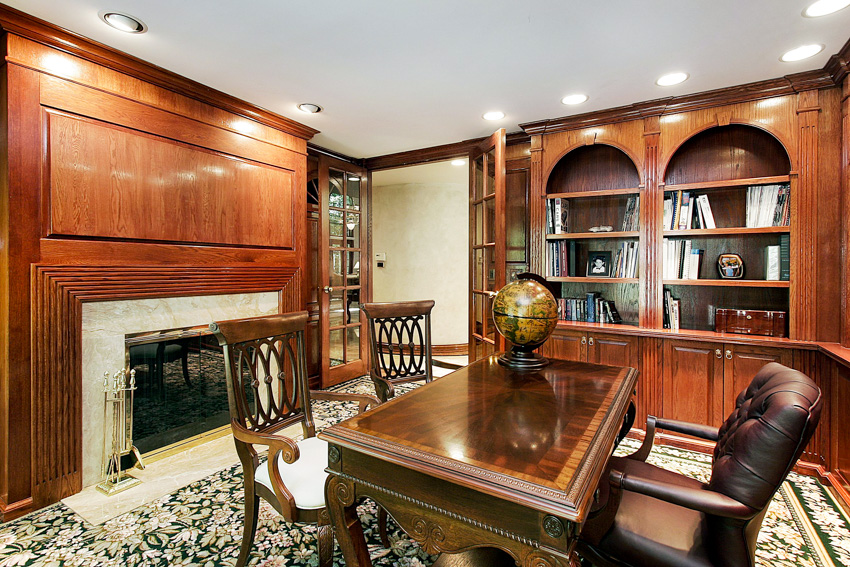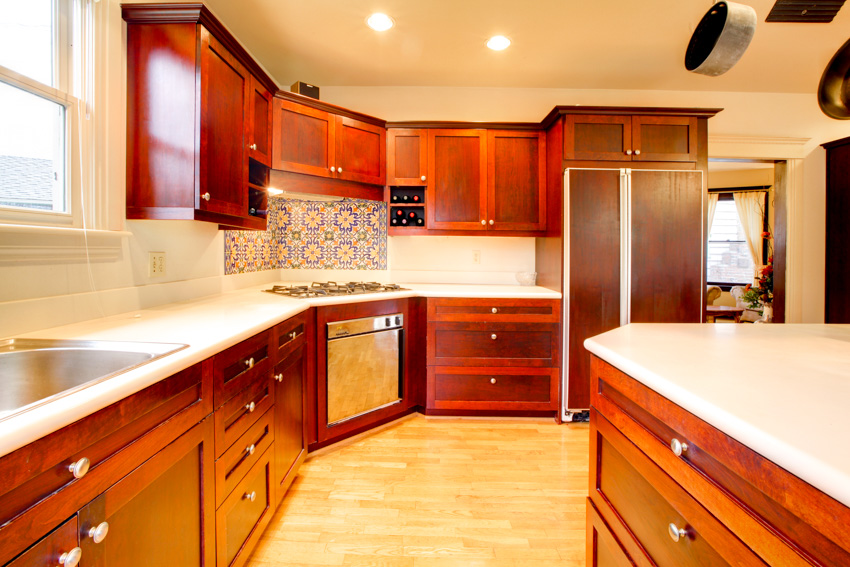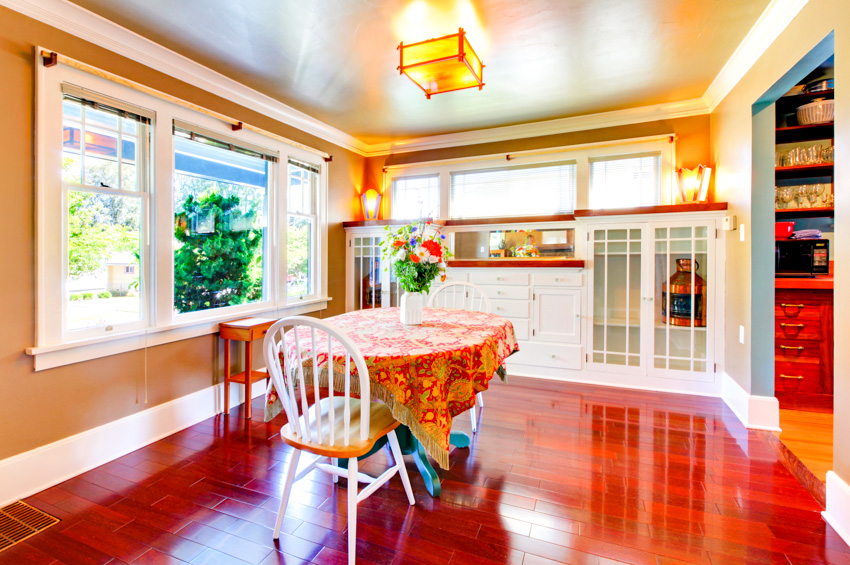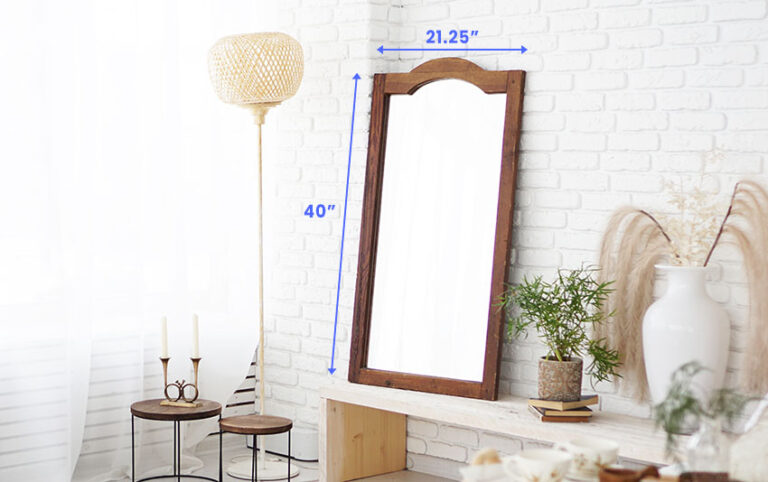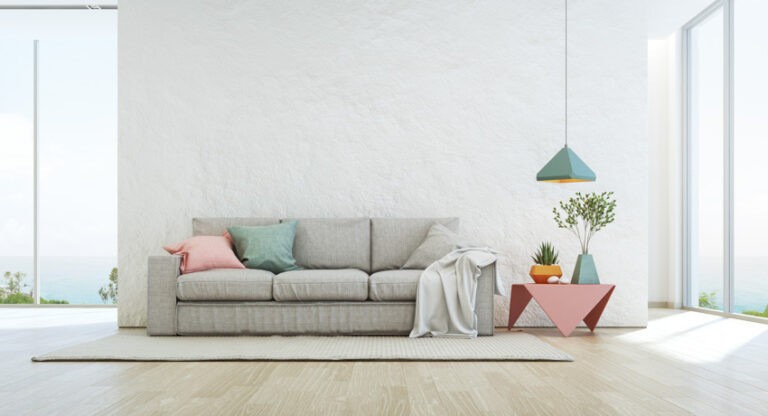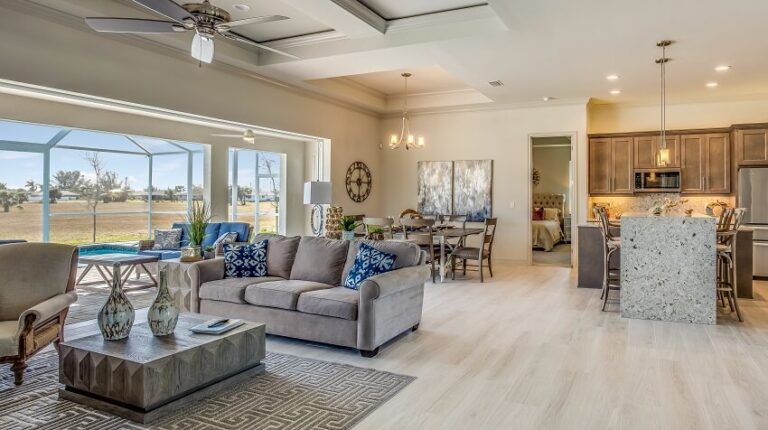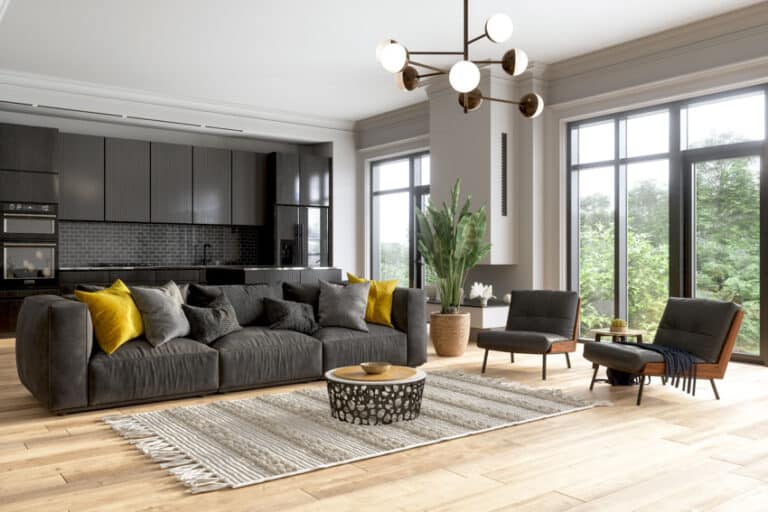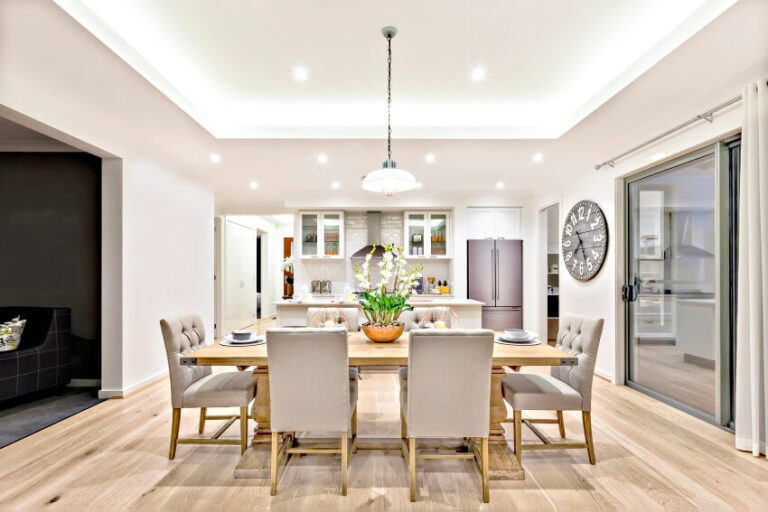Types Of Cherry Wood (Design Guide)
Cherry wood is quite popular in the residential sector. It’s a hardwood that’s famed and prized for its durability, rich colors, and grains. Its colors can range from yellow to red to white and even to dark brown.

This type of wood adds a touch of elegance to its surrounding areas and makes for the perfect furniture material because of its durability and heaviness. It has been much preferred even way back in the time of colonial carpenters.
Cherrywood holds a timeless appeal, and the plants that produce it are cherished as much as the trees themselves. It’s particularly ideal in making curved shaved projects, which is also why cherrywood is a popular material for boats as well.
Despite all of its merits, cherrywood is still more affordable compared to the other hardwoods in the market, making it even all the more attractive to carpenters, furniture makers, and woodworkers. [toc]
What Is Cherry?
Cherry trees are a source of this highly valued wood species, and the trees provide unique benefits that are appreciated by woodworkers, furniture enthusiasts, and lovers of fine things, including beautiful kitchen cabinets and flooring.
Hardwood: Natural cherrywood is easily considered one of the most highly prized wood species in the US. This is mainly because of the cherry tree’s smooth grain and because it is quite renowned among woodworkers and furniture enthusiasts because of its unique traits.
People of means, such as Thomas Jefferson, sometimes used cherrywood for flooring. The parquet floor of the reception room he designed in his Monticello home was modelled on a French example he had seen on his travels, and was constructed of cherry and beech, two constrasting woods – Cherry, Constance L. Kirker, Mary Newman
Janka hardness tests suggest the American cherrywood variety is durable with a score of 950 lbf, but is still considered a softer species of hardwood according to Floor Coverings International.
Dramatic red tones and grains: Its color makes cherrywood really stand out from the rest of the other woods out there. Typically, it would start out a little pink but interestingly, it would darken over time reaching a rich reddish patina that’s lustrous and visually impressive.
Cherrywood’s “ripening” process is usually observed within its first six months of light exposure. The more it ages, the more it continues.
It would usually take several years until it eventually reaches that beautiful reddish brown that it’s most known for. The aging process can usually be accelerated by exposing the wood to as much light as possible.
Smoking: Cherrywood is also generally considered a great smoking material. It brings in a mild and sweet flavor that can go with virtually any type of meat. It’s one of the most popular wood chips for barbeque grill smokers all around the world.
Used as medicine in Native American cultures. The Prunus Serotina species of cherrywood is also known for its medicinal qualities in Native America.
It’s particularly useful to treat coughs and colds and to this day, it is still being manufactured as a potent cherry cough syrup.
Cherry Color
Stains and finishes can be applied to cherrywood but the common consensus among manufacturers is to retain its natural colors as much as possible because they’re so rich and vibrant.
It is actually more recommended to opt for clear or natural finishes when working with cherrywood. Its colors and range and vary so much depending on the type of cherrywood procured and on the type of grain it has; whether it’s heartwood or sapwood.
Heartwoods come in much darker and richer colors, often preferred by people for various products, whereas sapwood normally comes in lighter ones, highlighting the distinct contrast that takes place within the plant.
As for the color range, they can go anywhere from light gray, to a golden russet color, to autumn red shades, to dark mahogany, and deep red, or even almost burgundy and purplish shades.
Cherry Characteristics
Cherrywood is most notable for its beautiful grains and colors that go deeper and richer as it ages and as it is exposed to light. Its best variable for color change is oxidation, creating its rich brown-reddish color over time; making it very aesthetically impressive.
It’s straight-grained and uniform in texture and has a smooth and medium-ranged luster. It is known for its easy workability but can prove to be a challenge with staining unless special processes are introduced.
It’s a durable wood that’s known to be quite resistant to decay and rot. It’s also considered fairly strong and is known to withstand heavy shock loads.
Cherrywood is easy to cut and mold and can come in a wide range of applications of uses because of its inherent flexibility, making it a favorite among woodworkers. Tips for maintaining the wood’s coloration include ensuring proper light exposure and care in the place it is used.
Different Types of Cherry
Here we share the different types of cherry wood.
Black Cherry
Black cherry is also known as American cherry. It is at times referred to as wild chokecherry, rum, and whiskey cherry at different points in time. It is the most popular of all the cherrywoods and has the scientific name of Prunus Serotina.
Eastern North America is known to be the most prolific producer of this particular type of wood and accounts for a majority of the whole country’s supply.
It’s quite resistant to wear and tear and has no trouble with being sanded down, screwed, nailed, or sewed; depending on a woodworker’s specific needs in creating pieces.
Color: it is light and pinking brown in color when freshly cut. But over time and light exposure, it can darken and turn into a medium brownish color for its heartwood whereas its sapwood will usually have a yellowish color that’s much paler in comparison.
Grain: Black cherry has a stable and straight grain pattern that makes it a viable candidate if a woodworker is looking out for design and pattern uniformity.
The heartwood grain for this type of cherrywood is more recommended as it produces less wastage but it isn’t uncommon for them to use sapwood extensively as well.
Workability: This is one of the best cherrywood types out there for workability which is why it’s the most preferred by manufacturers. It works extremely well with machines, making the manufacturing process smooth and easy.
The downside to this though is that staining can be tricky. It is usually recommended to opt for a gel-based stain or sanding sealer base before actually staining the wood or it may have blotchy and uneven results.
Black cherry with the heartwood grain is more workable compared to its sapwood grain counterpart, making it an attractive solution for various carpentry options.
Cost: Black cherry is slightly pricier compared to oakwood and maple but it is easily sourced which is why its price remains to be relatively affordable.
It’s priced at around $7.25 for footboards that are 1” thick and priced at $8.75 for footboards that are 2” thick.
Before making any decisions based on cost, seeking advice and gathering information from various sources such as experienced contractors or manufacturers can help answer any questions and prevent potential problems.
Sweet Cherry
Sweet cherrywood is also called European cherrywood. It comes from the Prunus Avium genus and is most common in Europe and Asia.
This is considered a much smaller variety compared to black cherrywood. Despite its smaller size though, it’s more superior in terms of hardness grading which makes it one of the most durable types of wood in the market today.
It is also known to be quite resistant to wear and tear and even to moisture or water exposure.
Color: The heartwood of sweet cherrywood has a light pinkish to brownish hue when it’s freshly cut. It can deepen to a golden brown color over time and with exposure to light.
Its sapwood typically plays a pale yellowish color. It is also known to have more color contrasts compared to black varieties.
Grain: sweet cherrywood is graded fine to medium with a close grain for its texture. It can range from being slightly wavy to being completely straight. Its end grain is distinctive for having small pores that are arranged randomly or in no specific pattern.
Workability: Sweet cherrywood is considered to be fairly workable with both machines and hand tools, and this is why a lot of manufacturers use it.
Similar to black cherrywood, this type is also considered to be a staining challenge because of its fine and closed grain. It can produce blotchy results if not primed with a gel-based stain or a sanding sealer.
As an extra measure, most manufacturers would also use glues, finishes, and turns when staining sweet cherrywood to stop it from looking blotchy after the staining process. It doesn’t usually produce larger-sized lumber due to the small size of its main tree.
Cost: Sweet cherrywood can range anywhere from $3 to $10 per footboard depending on its thickness and grain.
Brazilian Cherry
Brazilian cherry wood is also known as Jatoba in some areas. It hails from the Hymenea Courbaril genus and although named as such, it holds little relation to the Cherry found in the US.
It does, however, resemble domestic cherry in terms of color. It is considered to be a generally strong and hardy type of wood and is used as a material for pieces that require high strength.
Color: Brazilian cherrywood’s heartwood can range from a light orange-brown color to a dark reddish-brown, depending on its light exposure.
As opposed to the other types that can age over time, this cherry wood’s color changes are dependent only on the amount of light it’s exposed to. Its sapwood typically has a light color that borders on gray and yellow.
Grain: It has a medium grain texture to course and the grains are usually interlocked. They have very few large pores and occasionally, they can show signs of mineral deposits, giving them a unique and distinctive look.
Workability: This type is generally considered difficult to work with. It’s mainly because of the fact that it grades extremely high for hardness. It can make most tool cutters blunt and can be quite easy to break and tear because of its inherent hardness.
The recommended ways of processing it would be through steam bending, gluing, staining, finishing, and turning it. It’s commonly used for flooring, tool handles, specialty items, furniture, and even for shipbuilding. Read more about cherry wood flooring here.
Cost: This wood product can come in a wide range of lumber sizes and pricing options. A 5” X ½” board can cost $4.75 to $5, making it relatively affordable considering the fact that it’s categorized as imported timber.
Chilean Cherry
Chilean Cherry comes from the Nothofagus Dombeyi genus and is actually part of the Beech family. Its common lumber name is Coigue and is native to Argentina and Chile. Its harvesting can be quite limited as its population runs low all over the world.
Color: Chilean cherry usually comes in soft and muted colors and they can range from pale tan to pale pink. Its lower grades can range from grayish to cream colors with streaks in them.
Chilean varieties can darken as they age. When initially pale pink, it can turn into a pinkish-red color and eventually borders into a deep amber color as it continues to age.
Grain: Chilean cherry is known for its lustrous and fine grains and can yield a smooth yet patterned surface when refined.
Workability: Chilean cherry is relatively soft which makes it very workable. It won’t cause too much stress on the machines and tools that process it and it can also be easily molded into different molds and shapes.
The wood also stains fairly easily which is why it can be quite popular among manufacturers and woodworkers.
Cost: Chilean cherry is known to be extremely expensive and is seldom sold or is seldom available. This is because this tree is considered fairly rare and exporting it is oftentimes prohibited because it has a very limited tree population.
It’s hard to quantify the value of the tree because it is rarely available in the market but understandably if made available, it’s expected to be quite expensive due to its rarity and high-quality construction properties.
Patagonian Cherry
Patagonian cherry is also known as Tiete Rosewood and is actually sprung from the rose family. Its genus is Guibourtia Hymenaeifolia and is quite common in South America and can grow to large sizes of up to 130 – 165 feet in height.
Color: Patagonian varieties can range from a color wheel of light orange to pinkish brown. It can darken and redden with age.
Grain: This cherrywood has a grain texture that’s straight and a little bland. It has a very uniform color and appearance which is why it is most preferred to manufacture it into turned objects, flooring, and small specialty wood items.
Workability: Patagonian cherry is extremely dense and difficult to work with. It is also known to have silica content which can dull certain cutters prematurely. However, it does have its redeeming factors because of its stable patterns and uniform grain.
Cost: Patagonian cherry is considerably inexpensive despite it being categorized as imported wood. It costs $5 per square foot and is commonly used for hardwood flooring. See more hardwood flooring prices here.
Caribbean Cherry
Caribbean cherrywood is sourced from Belize, Mexico, and Guatemala. It is also known as Black Cabbage Bark or Machiche.
It is scored high for hardness and is generally considered difficult to work with for uses other than flooring materials.
Color: Caribbean cherrywood can come in a wide range of colors and can vary greatly from tan to yellow to brownish red and even to a dark deep red hue. Its color change can be brought on with age and with light exposure as well.
Grain: This cherrywood is extremely close-grained and fine, with the occasional line and ring patterns.
Workability: Caribbean cherrywood is extremely difficult to work with and can be quite notorious because it can cause a strain on machines and can dull cutters that are used on it.
Understandably, this type of wood isn’t very popular among manufacturers because of its difficult workability.
Cost: Caribbean cherrywood isn’t commonly sold because of its extremely high hardness rating. It’s an imported hardwood that’s difficult to work with and is actively avoided by manufacturers and woodworkers in general and can price quite high at around $25 per footboard.
English Cherry
English cherrywood is commonly sourced in the UK and boasts a warm and natural luster that makes it ideal to be used as a material for joinery and other types of furniture.
It’s considered one of the most luxurious types of cherry species and also springs from the Prunus Serotina genus, similar to black cherrywood.
Color: English cherrywood can come in light pink and light brown colors with ringed patterns when freshly cut and they can deepen to a golden brown color as it ages.
Grain: It typically has a cross-grained pattern and is close-grained, making it generally smooth and seamless in its appearance.
Its cross-grained traits can make it prone to tearing though so there are usually extra precautions done when manufacturing it.
Workability: English cherrywood is fairly workable but it does require special handling such as cutting at a 20-degree angle so as not to make it prone to tearing. It takes stain and polish extremely well and does not require special processes to absorb the color as it’s relatively light-colored.
Cost: English cherrywood usually ranges at a price of $9.92 – $11.78 per foot board with a ¾ inch thickness.
Types Of Cherry Wood Grain
Heartwood Grain
Cherrywood with a heartwood grain is typically darker as it’s the part of the tree that’s closer to its core or its center. This is typically more preferred by craftsmen because of its intrinsic richer and darker color.
Sapwood Grain
Cherrywood with a sapwood grain is lighter and it’s the part of the tree that’s in the outer layers, or near the bark.
And although it may not be as valuable as the heartwood grain, it’s still prized and is usually made into floors, bowls, and other smaller items, pieces of furniture, or even boating interiors.
Is Cherry A Hardwood?
This is more related to the type of cherrywood genus that it comes from. Contrary to popular notion, a tree’s classification of being a hardwood isn’t based on its density or its resistance to rot, dents, and scratches.
For example, in general, cherry is considered a hardwood if it comes from the Prunus Serotina genus and is hence, classified as a hardwood because it’s not categorized as a coniferous species.
Is Cherry Rot Resistant?
Cherrywood is generally considered durable but its most prized part is its heartwood which is considered very resistant to decay and rot.
This type of wood is preferred because of its heavy-duty and weatherproof traits. It’s quite popular as flooring and as patio furniture as well.
In some cases, depending on the different types of cherrywood, it can even be used as material for boats and other uses that are usually exposed to the elements.
Where Does Cherry Come From?
Cherrywood comes from the American Black Cherry Tree with the scientific name Prunus Setorina. This is the most common type of cherrywood used by manufacturers and woodworkers.
This genus originally sprung from certain parts of Mexico but is actually currently heavily grown in New York, Ohio, and Pennsylvania.
It is sourced from vast and sustainably managed forests which makes it readily available, fairly easy to source, and more importantly, affordable.
Is Cherry A Good Wood For Furniture?
One of the standout traits or attributes of cherry wood is its straight and uniform grain. This means that the wood, once processed, can polish extremely well and can end up with a beautiful and finished look; making it a viable candidate as a material for furniture making.
A lot of antique furniture pieces are made out of this wood, a testament to the material’s durability and capacity to last for centuries, given the proper care and maintenance. It’s very prized among craftsmen and is considered a generally good investment that pays off in the long term.
It’s also important to take note of the fact that cherry ages extremely well; or to say it more accurately, gets better as it ages. It is considered one of the best furniture materials that are designed to last and to be enjoyed for years.
What Is Cherry Best For?
Cherrywood is a hardwood that’s priced considerably less compared to the other hardwoods out there. This is why it is highly prized by manufacturers.
This type of wood is best used for furniture, toys, furniture, paneling, caskets, flooring, and even for boat interiors. It has a rich color, smooth grain, and can be quite flexible. See more related content in our article about the different types of hardwood floors on this page.

